Media | Articles
GM’s 3800 V-6 was long-lived and underappreciated
The Chevy small-block V-8 is perhaps the most famous engine ever produced by General Motors. It is a simple, stalwart design whose popularity and status only cemented as it became the powerplant of choice among hot-rodders. For more than 50 years, the small-block has been the backbone of affordable speed. However, just as significant in GM history is an engine that toiled (albeit less prominently) for nearly as long: the 3800 V-6.
Between its 1975 debut and its 2008 sunset, this 3.8-liter V-6 was installed under the hood of more than 25 million vehicles. Originally designed by Buick, it was mostly assigned to workhorse duty for Oldsmobile, Pontiac, and Buick, motivating fleets of sensible sedans and coupes. While the 3800 did enjoy a few flashes of auto enthusiast attention, it never got the same widespread adulation as the small-block or even the big-block, and many assign it second-tier status among engines in GM’s historic portfolio.
Here’s the story of how a derivative, near-castoff engine design came to be critical in fueling the fortunes of America’s largest car company.
Aluminum bad, iron good (but rough)
The 3800’s origins date back to the early 1960s, when Buick debuted the first V-6 passenger car engine ever to be manufactured in the United States. A byproduct of the company’s quest to produce its own unique, aluminum-block V-8 (marketed as the Fireball), the cast-iron V-6 Fireball was far easier and significantly cheaper to build. This being a mass-market powerplant, it also helped that the V-6 version did not suffer the high rate of defects associated with the V-8’s aluminum construction.
Unfortunately, despite the benefits of its relatively light weight, the Fireball V-6 retained several design elements from the V-8 that, initially, proved sub-par in translation. As a cost-cutting measure, GM effectively sliced a pair of cylinders from the end of the original engine while retaining the 90-degree bank angle. Though the V-8 enjoyed the balance of an even firing interval, the V-6 version had an odd firing interval that gave these early 3.2-liters a rough, rumbly idle.
Marketplace
Buy and sell classics with confidence
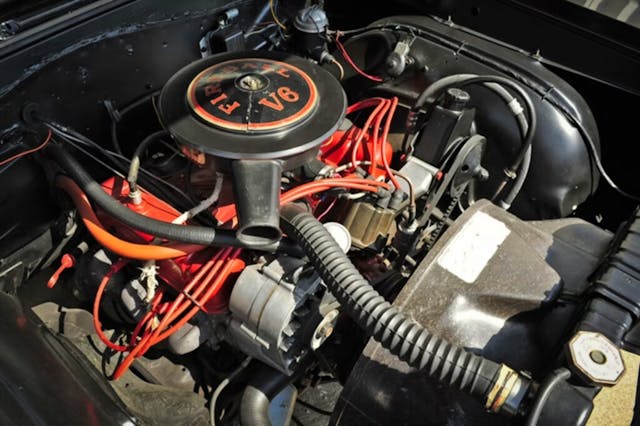
Even with softer, flexible motor mounts to absorb vibrations, it won few fans. The V-6 floated through the small and “intermediate” Buick and Oldsmobile line-ups between 1962 and 1967, and even a displacement boost couldn’t convince GM execs to stay the course.
Instead of reengineering the V-6 at great cost, perhaps with a balance shaft, Buick made a shrewder move: it offloaded the Fireball V-6 tooling to Kaiser-Jeep, which had no qualms about stuffing a less-than-smooth motivator into its Jeeps and other rustic SUVs. Fortunately, a third-act mea culpa forced by the OPEC energy crisis saw GM buy back the rights to its own engine design from a cash-starved AMC in 1974, after realizing its fuel-efficient cupboards had run largely bare.
It’s here that the 3800 series found its true beginning.
Will the real V-6 please stand up?

Always cost-conscious, GM had first tried to sweet-talk AMC into handling manufacturing the overhead-valve V-6 engine. After being rebuffed (or repulsed by a desperate American Motors quoting an exceptionally high price tag for production, depending on which story you believe), GM changed tack. It took a quick and easy route to push the V-6 to the market for 1975, punching displacement out to its final 3.8-liter form—in its own factory—but leaving everything else about the motor unchanged.
The 3.8-liter V-6 saturated GM showrooms almost immediately, powering models as diverse as the Chevrolet El Camino, the Pontiac LeMans, and the Buick Skyhawk, with stops in the Oldsmobile Cutlass and the Pontiac Firebird along the way. With close to 20 different models laying claim to the V-6, economies of scale were such that Buick’s once-cast-off engine finally warranted the refinement and development it had previously been denied a decade before. This primarily took the form of a split-pin crankshaft that revised the engine with an even-firing pattern, effectively erasing the previous, unpleasant vibrations.
This one simple decision, arriving in 1977, helped cement the engine as the bedrock of the General Motors passenger car. However, despite its status as an affordable powerplant (true for both manufacturers and buyers), the V-6 was about to pull a power move seldom seen in the automotive world: The humble 3.8 made a play for enthusiasts’ hearts with a red-hot high-performance edition.
Soaring fuel prices and crushing emissions regulations, you may recall, had sidelined large-displacement V-8 engines for much of the 1970s. That caused automakers far and wide to search for alternatives to big cubic inches. Buick had been toying with turbocharging for several years prior to the 1978 launch of its T-Type family, and boosted versions of the V-6 ultimately covered almost every two-door car built by the brand. The setup even branched out into motivating the Pontiac Trans Am Turbo and Chevrolet Monte Carlo Turbo. Forced induction proved an unexpected edge for GM as it moved into the ’80s, culminating in the era-defining Regal Grand National and GNX models. These legendary eight-cylinder-slayers owe their success to the might of GM’s turbo 3.8-liter V-6 engines.
Front-wheel drive future
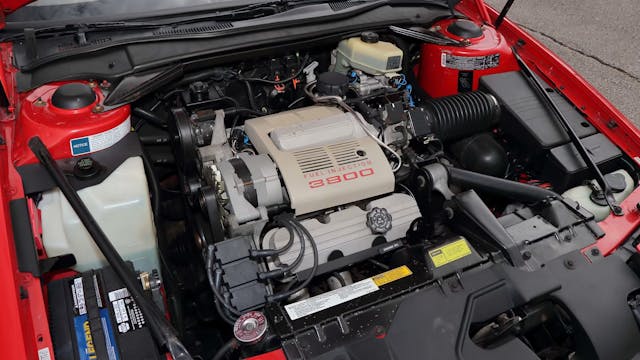
While the rear-drive Grand National and its longitudinal engine may have garnered the most headlines, it was the transverse version of the 3.8-liter V-6 that had the broadest influence in the industry. General Motors was knee-deep in its transition to front-wheel drive platforms by the middle of the 1980s, and it massaged and modified the 3.8 to meet this new challenge. In the space of a few short years, the engine abandoned carburetors for electronic fuel injection, lost its traditional ignition distributor, and gained a balance shaft—moves that thoroughly modernized the V-6 to match the expectations generated by the rising tide of competing Japanese imports.
By 1988, the 3800 moniker became official. It was applied to a fresh crop of 3.8-liter engines that embodied the sweeping updates making so-equipped GM cars competitive with Ford, Toyota, and Honda. Dubbed the “Series I,” the engine was initially assigned to the mid-size and full-size sedans and coupes first to heed GM’s front-wheel drive call. It wasn’t long, though, before the transverse 3800 had spread into nearly every corner of the Buick, Chevrolet, Pontiac, and Oldsmobile empire.
Once again the bread and butter of General Motors’ engine strategy, the 3800 was once again courting forced induction at the start of the 1990s. This time it was a supercharger (rather than a turbo) stuffing additional atmospheres into the combustion chamber, and a blower first found its way into big-boned Buicks via the Park Avenue and its Oldsmobile and Pontiac equivalents.
Stay of execution
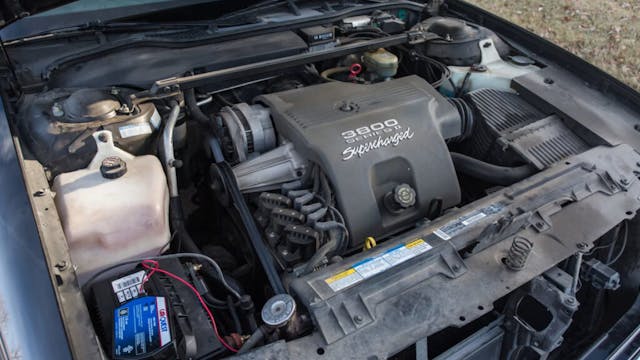
One more major metamorphosis awaited the 3800, this one nearly 35 years after its initial Fireball debut. Dubbed the “Series II,” this V-6 variation represented the culmination of GM’s engine design prowess at the time. It arrived in 1995 with cross-bolt main bearing caps, bigger valves nestled inside larger cylinder heads, the highest compression ratio to date, and a composite intake manifold, among many other internal and external improvements (including a lower deck height that helped with packaging and reduced weight). Also along for the ride was an improved, Eaton-supercharged edition of the engine that became nearly as common as the naturally aspirated version. The 3800’s dominance of General Motors drivetrains was nearly impossible to escape in any sedan or coupe car larger than compact-size.
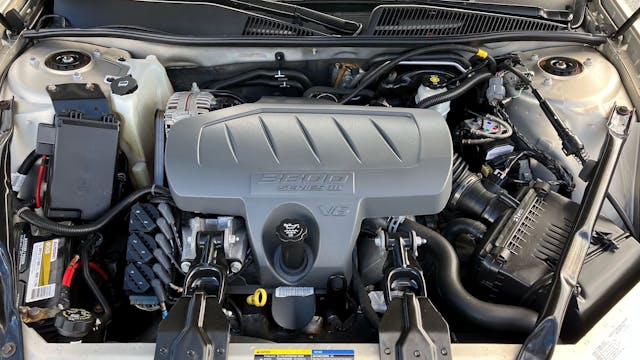
The 3.8-liter V-6 was well-positioned to ride out the rest of the decade in style. While it received a Series III update for 2004 (including throttle-by-wire and a new fuel injection system, along with an aluminum intake manifold to replace the previous plastic unit), the fundamentals remained the same until it was pulled from production in 2008. By that point, the 3800 had far outlived its planned obsolescence, arguably by almost a decade—proof of what its diehard reliability and appealing low cost meant to GM’s bottom line.
An ode to endurance
Time has caught up to nearly every pushrod engine. While the LS-series of small-block Chevrolet V-8s continues to generate massive profits in the pickup and SUV market, General Motors eventually yielded to the efficiency benefits and sophistication of dual overhead camshafts in its passenger cars. The relatively large displacement of the 3800 in this context—slightly greater than the company’s current range-topping 3.6-liter V-6—didn’t make it an appealing do-it-all base engine in a world where turbocharged four-cylinders dominate.
Still, the endurance and relevance of the 3800 is astounding. Even at the end of its lifespan, in terms of weight the iron-block engine was within spitting distance of the aluminum block V-6 that replaced it, and its horsepower, torque, emissions, and fuel efficiency remained competitive until its final hour. What began as a decidedly simple, budget-driven afterthought evolved over several decades into a decidedly unsexy yet remarkably effective multi-purpose tool. It plugged nearly every hole in the GM line-up for decades. Following initial bumps, GM committed to continual improvement and modernization that extracted an absurd tour of duty from an engine that was, at the outset, dumped on a rival’s doorstep.
***
Check out the Hagerty Media homepage so you don’t miss a single story, or better yet, bookmark it. To get our best stories delivered right to your inbox, subscribe to our newsletters.













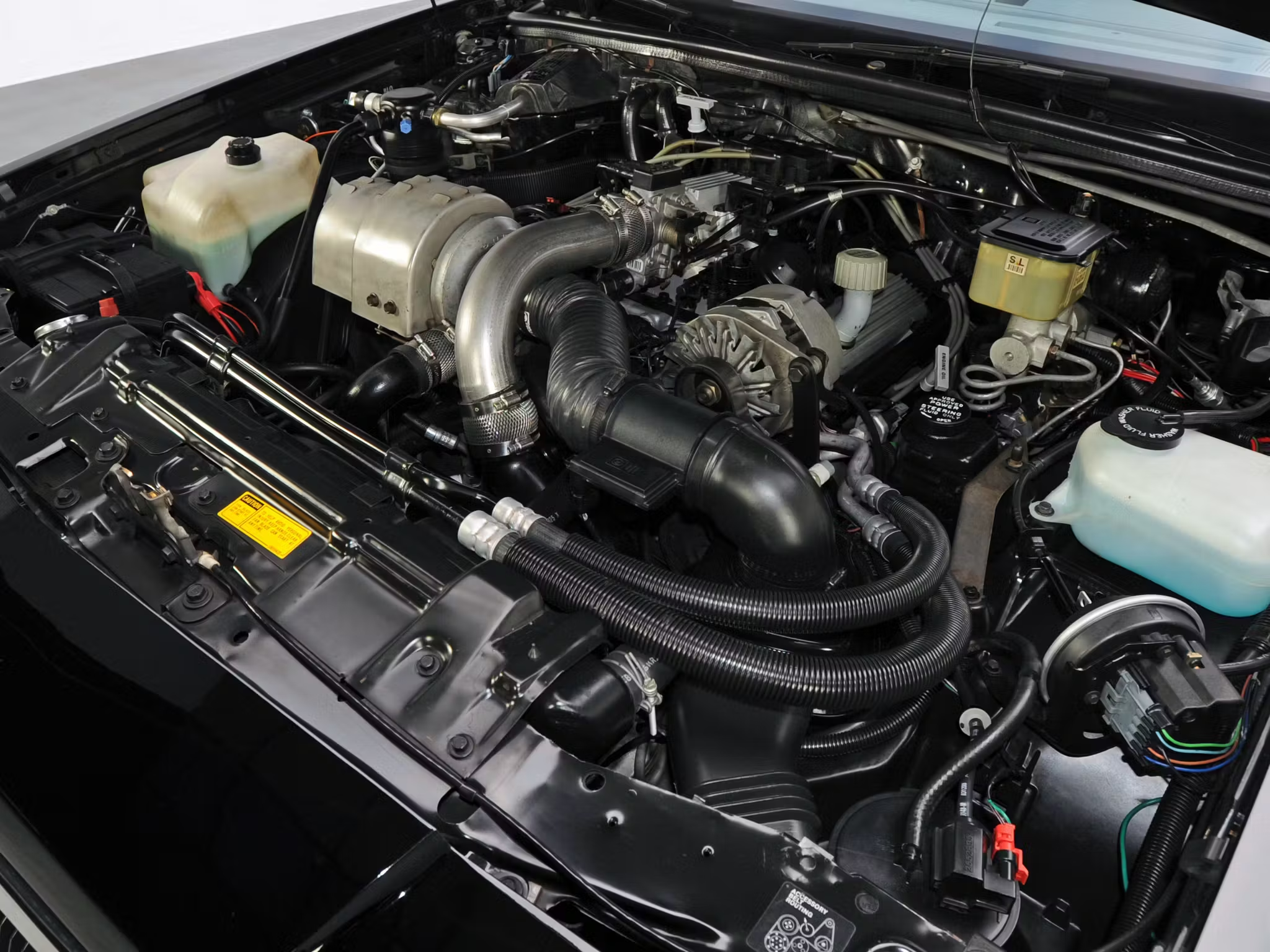
A neighbor of mine purchased a new 76Pontiac midsize with the 3900 oddfire and I purchased a Buick midsize with the same engine. We both did the maintenance on our own cars and knew what we were doing. He had purchase his car 3 months before i made my purchase. they were both under powered.
At just over 17,00 miles his engine spun a rod bearing and I razed him about his bad maintenance, but 2months later at about 17,600 miles my engine had the same problem, a spun rod bearing.
It was about the worst engine produced beside the early olds,etc attempt to make diesel engines out ot gas engines.
Why are you commenting on a 3900(?) when the story is about the 3800 V6? Plus, there is no such mileage as 17,00, you didn’t raze your friend, you razzed him and the old 350 diesel was indeed a diesel engine not based on the gas small block 350.
Are you certain? I believe that I have often read that the Olds diesel WAS based upon the gas V8.
I had 2001 Monte Carlo Had to rplace 2 catalic converters and replace intake (3800 )
Not under appreciated by me!
I had 2 Park aves. One supercharged.
The kids with their fart can mufflers couldn’t believe the old man in the flat cap
left them sitting at the stop light.
My parents bought a new ’88 Toronado Trofeo with the 3800. I drove it often when I went to family events with them. That was a beautiful car, inside and out and the 3800 had plenty of power and got 24mpg. I hated when they sold it and bought a Chevy Astro van. I drove that on a long trip with them one time and the driver side footwell was so cramped that when I stopped for gas, I could hardly walk!
My daily driver since 2001 has been a ’95 Park Avenue (base model, unsupercharged). Its 3800 has racked up close to 184,000 miles so far without touching the engine itself.
The plastic intake manifold had to be replaced twice and so have the ignition coils. The V6 is now also on its third starter and alternator.
All of these peripheral issues were caused by normal wear and tear and didn’t occur before the 125,000 mile mark.
The 3800 continues to power my Park Avenue strongly (the car will do an honest 128 mph on our German autobahns, even though I prefer to cruise at 75), dependably, and even rather economically (I get an average of 23 mpg).
This is the best car I’ve ever owned, period, thanks in no small part to this magnificent engine.
Bought a new ‘79 Cutlass Supreme near the end of the model year. Dealer had one with the 231/3.8 L V6 and one with the 260 cid V8. I negotiated $1000 off the MSRP of $7300 for the V6. Gas prices were high that year and I told the dealer I’d “take the V8 off his hands” for the same price I negotiated for the V6. Figured with the high gas prices, he’d be happy to do that, but he wouldn’t bite, so I took the V6.
Great car. The only thing that I had to replace was a water pump. Drove it 8 years and put 95k on the odometer. Still looked great and sold it via classified ad in the local paper.
Bought a new ‘88 Bonneville SSE with the 3800 engine. Smooth and fast! Put 120k on that car with no engine problems at all. Gave it to my 16 year old son who put another 40k on it delivering pizzas and doing typical teenage driving. He wrecked it, and we “fixed it”, but the wife didn’t feel comfortable with our fix and insisted we give it to Salvation Army and buy the kid a newer car.
My two GM 3.8/3800 V6’s were great to us!
You may have been better off without that 260 V8. My cousin had a Cutlass Supreme coupe with one, and it was a very lame engine. It topped out at 80 MPH (yes, the 55 MPH national limit was in effect, but that top speed was an indicator of its weakness), and it was very slow in acceleration. I don’t know how his MPG was, but I would guess it might be less than the 3800, due to the greater internal friction of 8 cylinders. The 260 engine was also likely heavier than the 3800.
O good engine, for sure, but in my experience with Detroit V-6 engines, the best one ever produced was the 60’s – early 70’s GMC “Big Block” used only in trucks. Of properly maintained, you could easily get 400,000 miles on the original build, and they had great torque.
Perhaps it is because I live in central Michigan, the home of the 3800, but these engines are not underappreciated here. They are great and desirable. They last almost forever and have decent power and good fuel mileage. I believe they were dropped because the cast iron block and heads did not warm up quickly enough to meet emissions. that’s too bad.
We owned 3 3800’s: a 1987 LeSabre coupe, a 1998 Grand Prix GTP (supercharged) coupe, and a 2002 Grand Prix sedan. All were good engines for their times, and all achieved better MPG than I would have expected – and often better than the EPA estimates on the highway.
wife and i had a new 99 Buick LeSabre with the bullet-proof 3800 V6.. visited every national park.. fuel economy was amazing at 32 mpg round trip… never spent a cent on anything related to engine repairs and after 18 years and 357,000 miles bought a 2017 Chevrolet Silverado…. my opinion is there has never been a better engine than the 3800 bring it back GM
Big fan of the 3800 engine here. The Series 2 is in two of our “daily drivers now”. I guess my first taste of it was with my 3400 V6, 2003 Impala (I know I should have got the 3800 – lol). Several years ago we got a 2000 Park Avenue Base and soon after that I got a low mileage 2002 LeSabre. We really like these two cars and I recently did all the gaskets from lower intake (used Felpro metal carrier gaskets) on up (and used metal coolant elbows too) around a year apart. This engine is so smooth I don’t even know it’s running. Once you do all the things you need to do on the 20+ year old engine (if not already done), they are ultra reliable. I have no plans on parting with my LeSabre any time soon as most new cars are crap and not easy to work on if something goes bad. My ICM died on my LeSabre recently at just over 60k miles but it was 22 years old so no big deal. I changed the crankshaft position sensor, too, but the ICM was the crank no start issue, not the C.P.S. These engines are well worth the little effort they need to keep them spinning on down the road.
In the last few decades there really haven’t been many breakthrough improvements with V6 engines except the obvious double overhead cams, but I feel the added complexity is not worth the rewards at all. No thank you. You’ll have to pry my 3800 from my cold, dead hands !!
Above and Beyond Excellent 👍